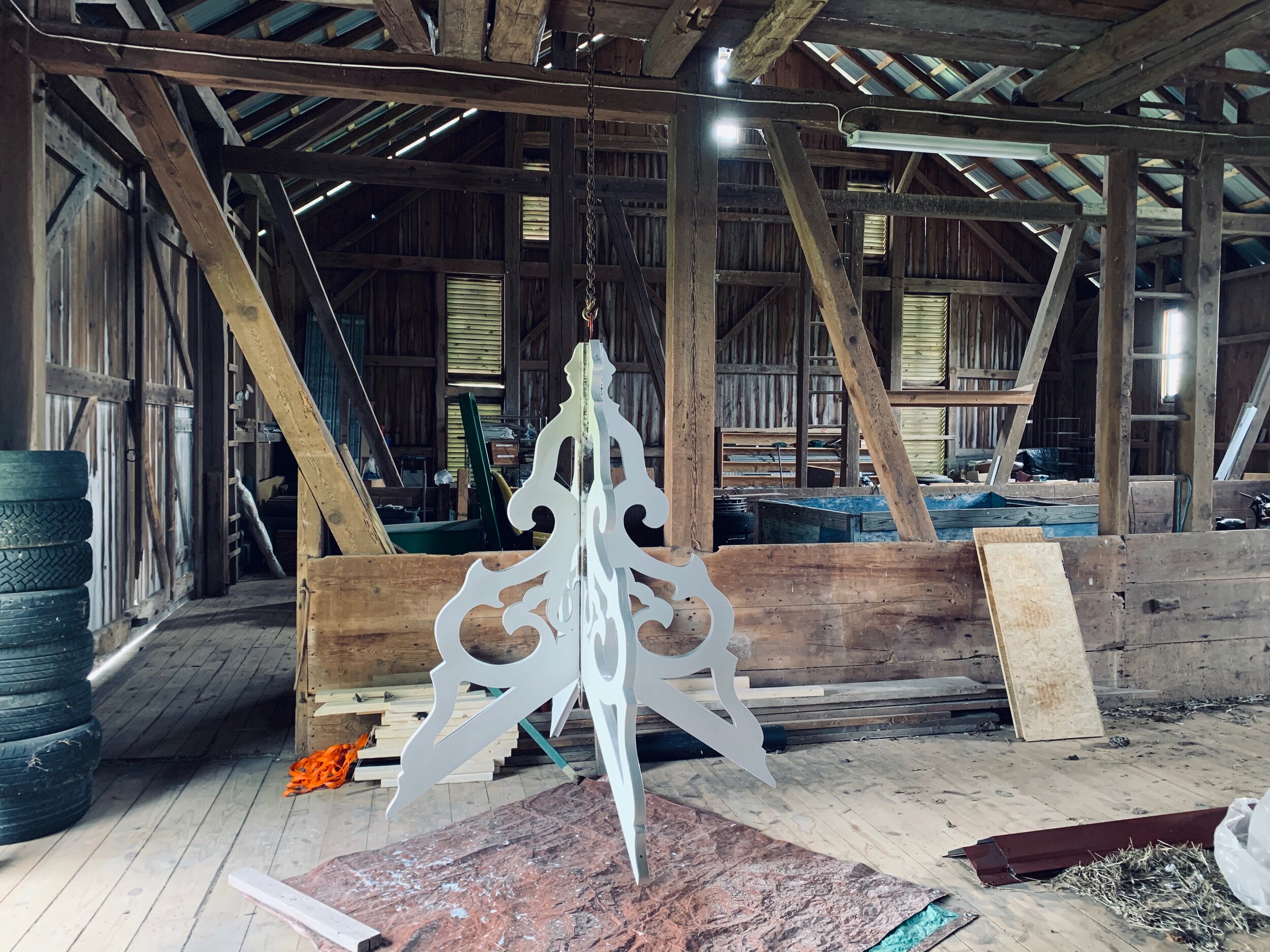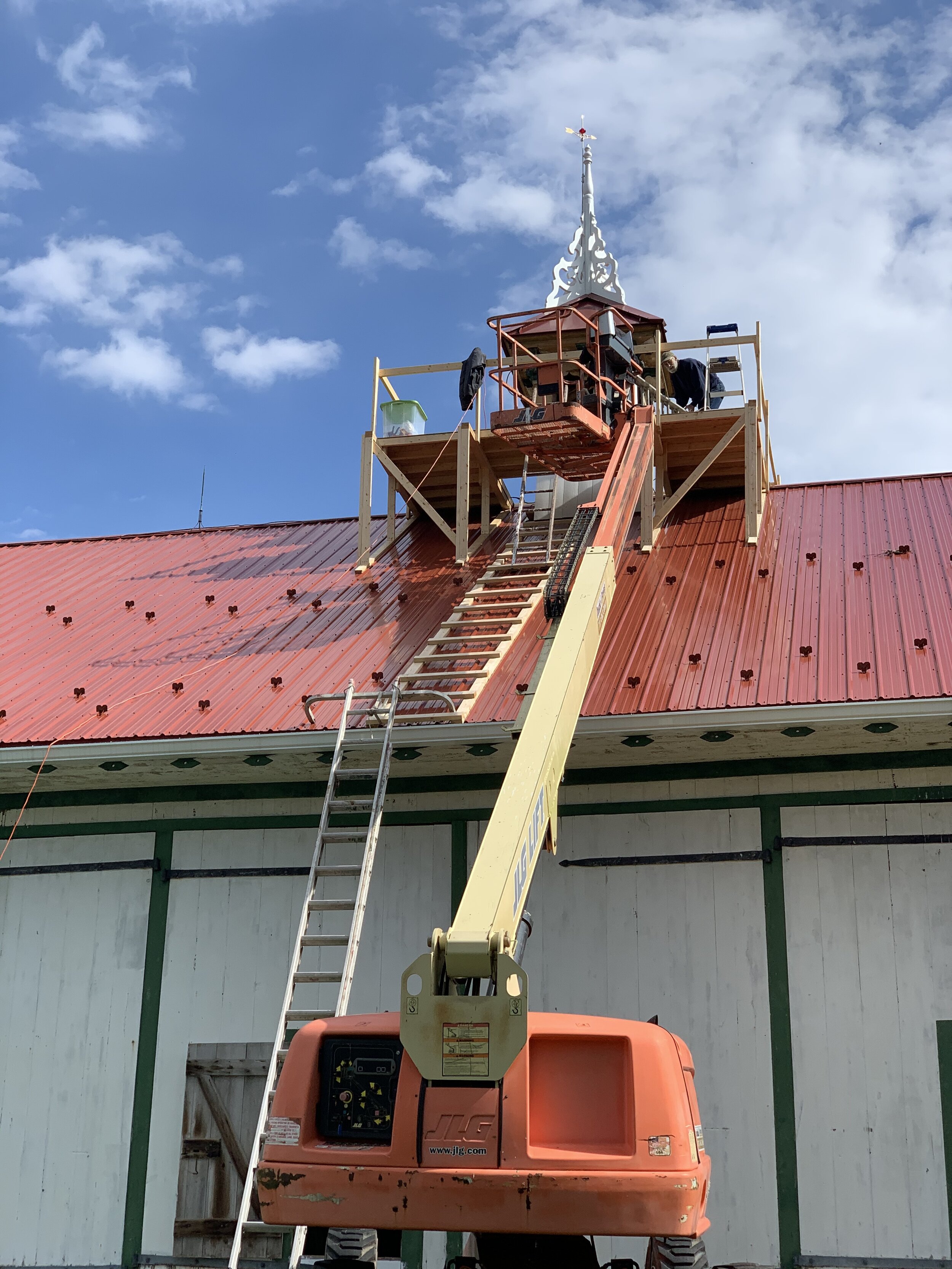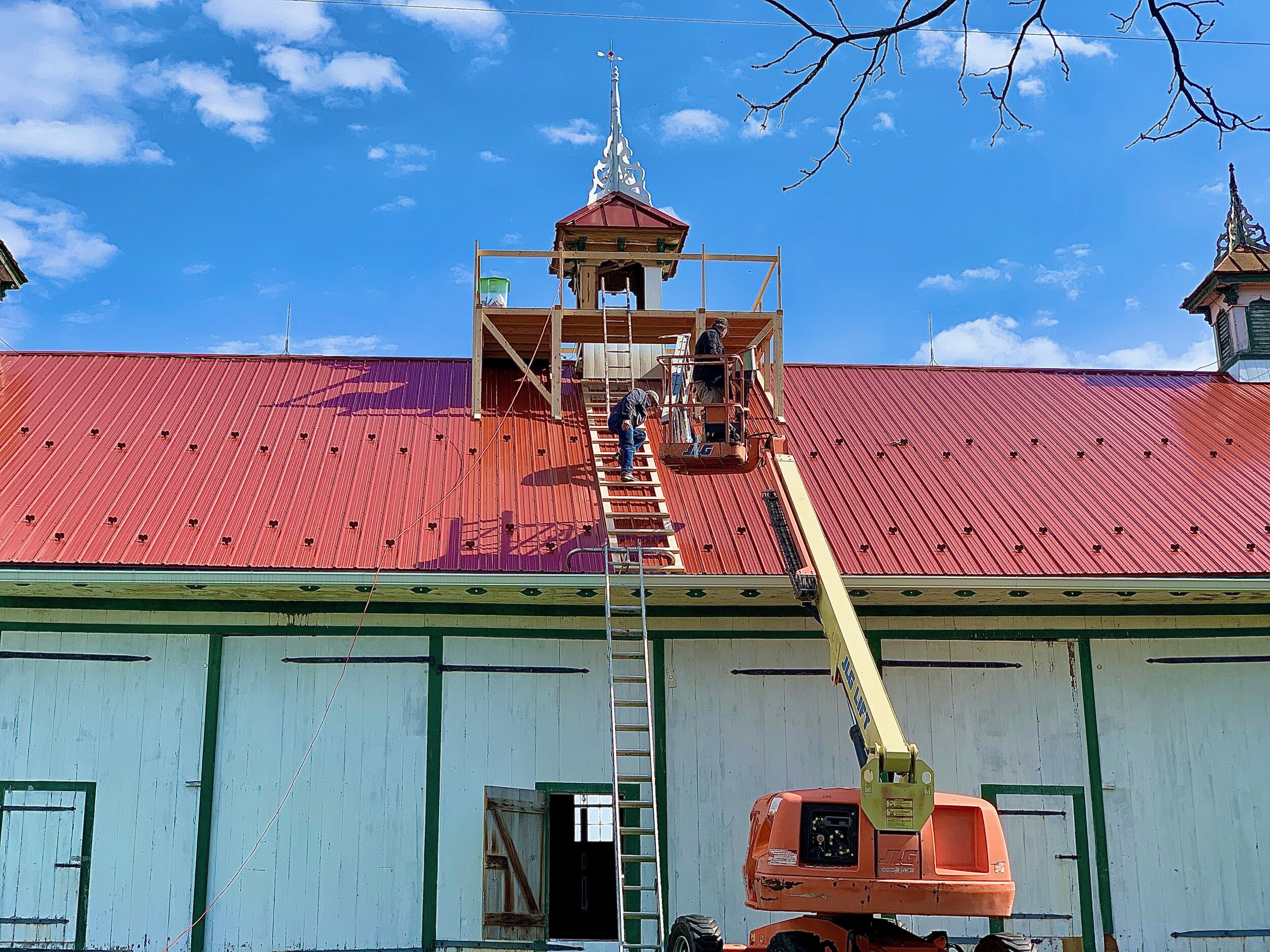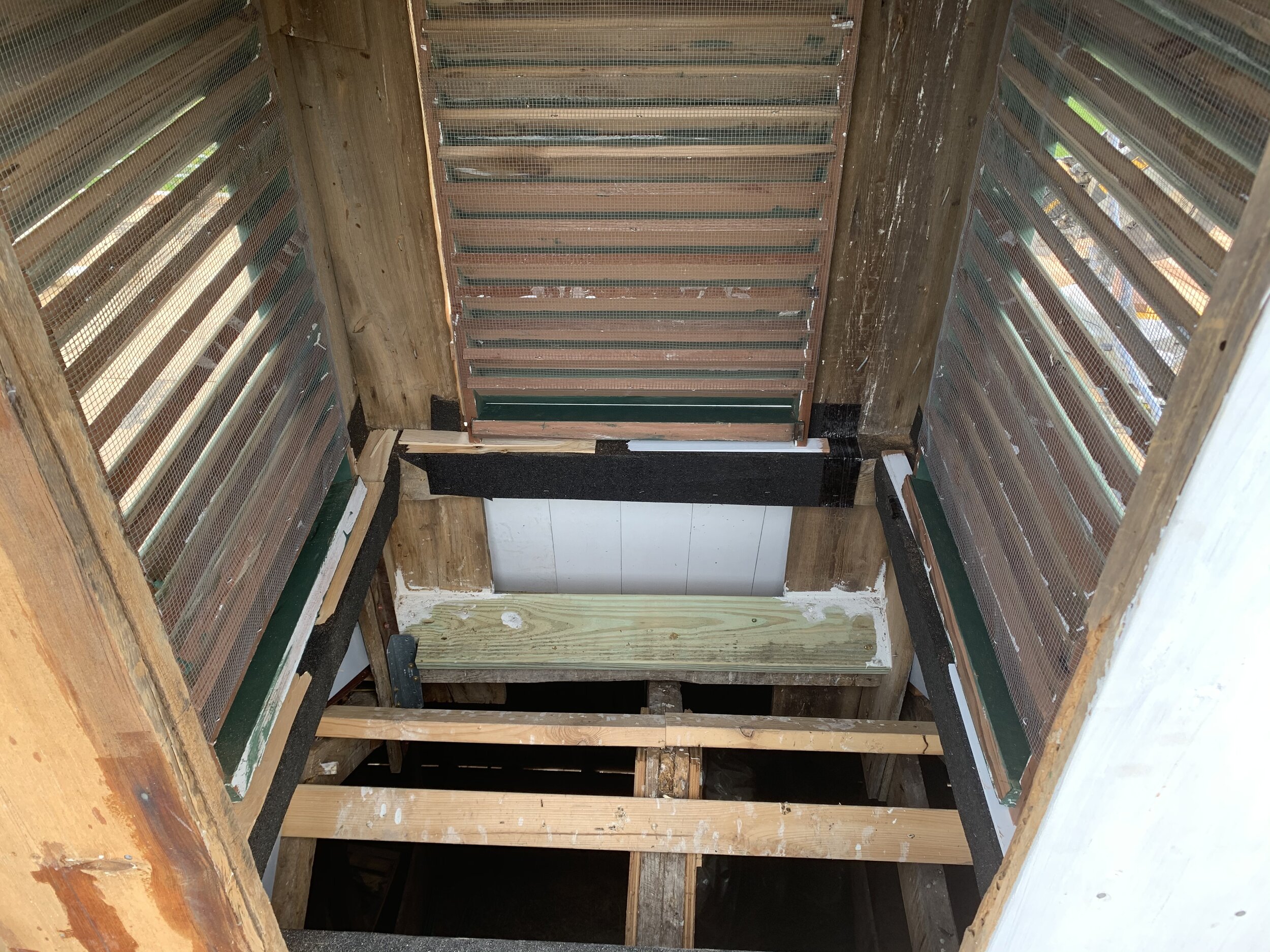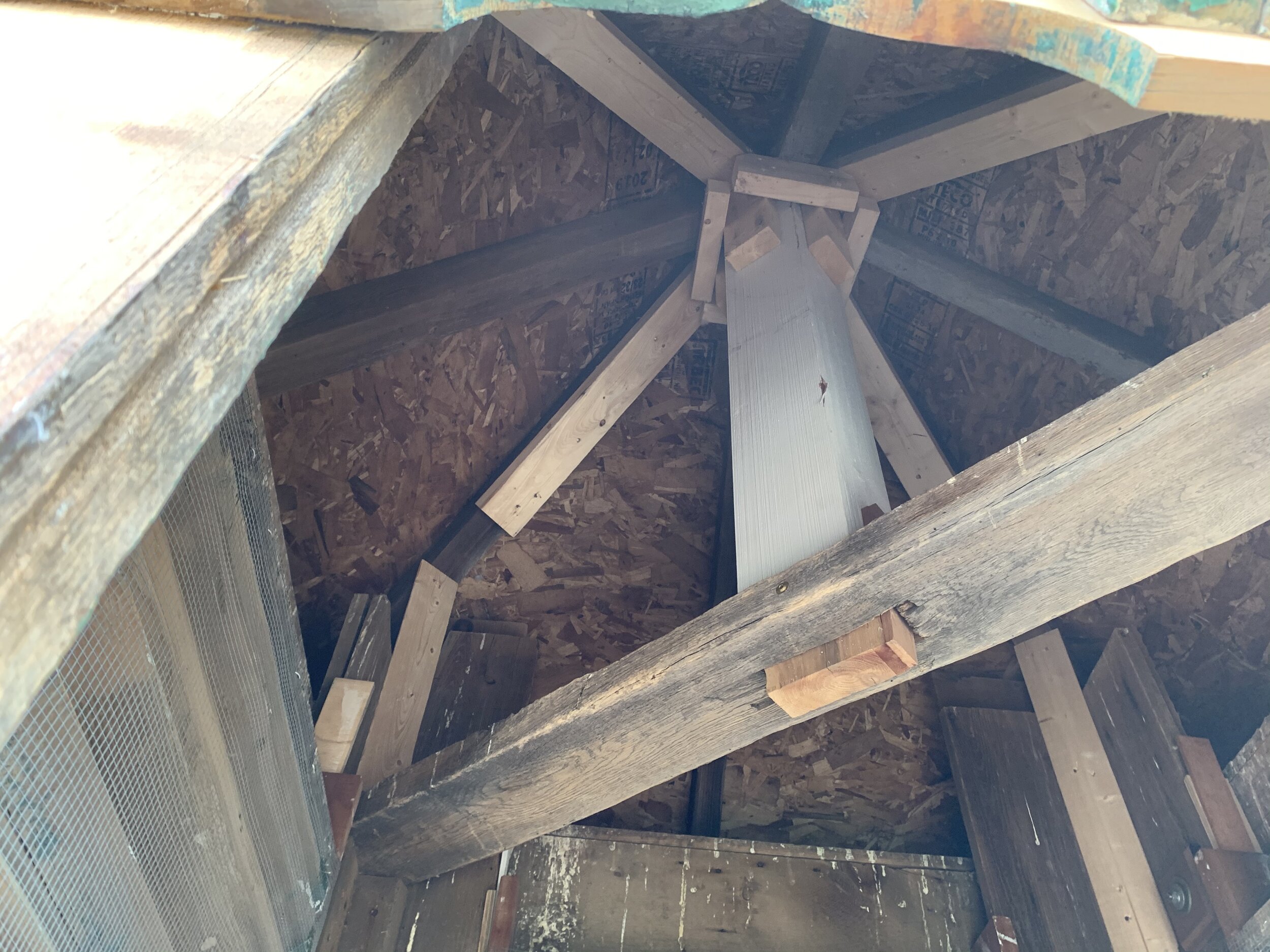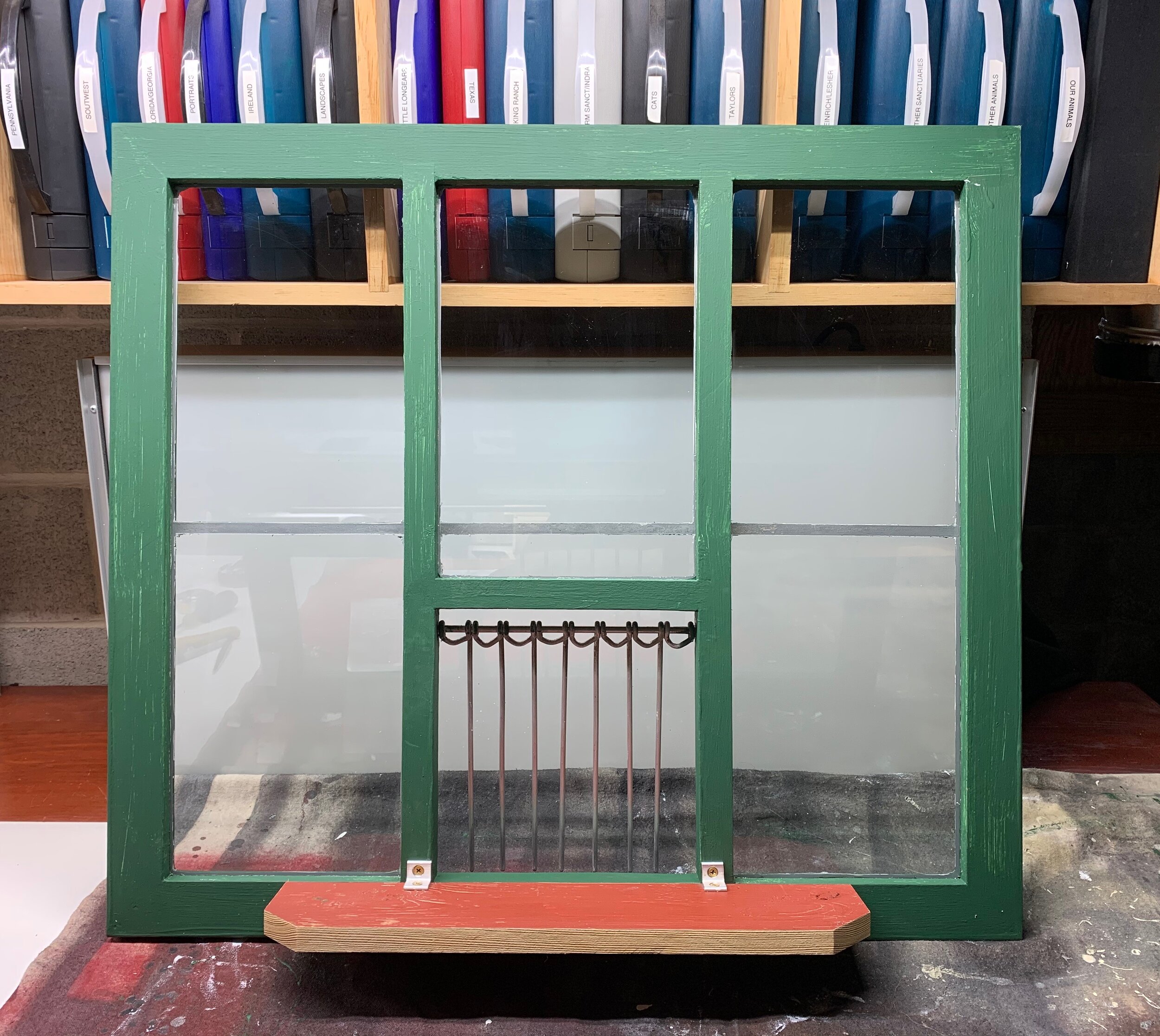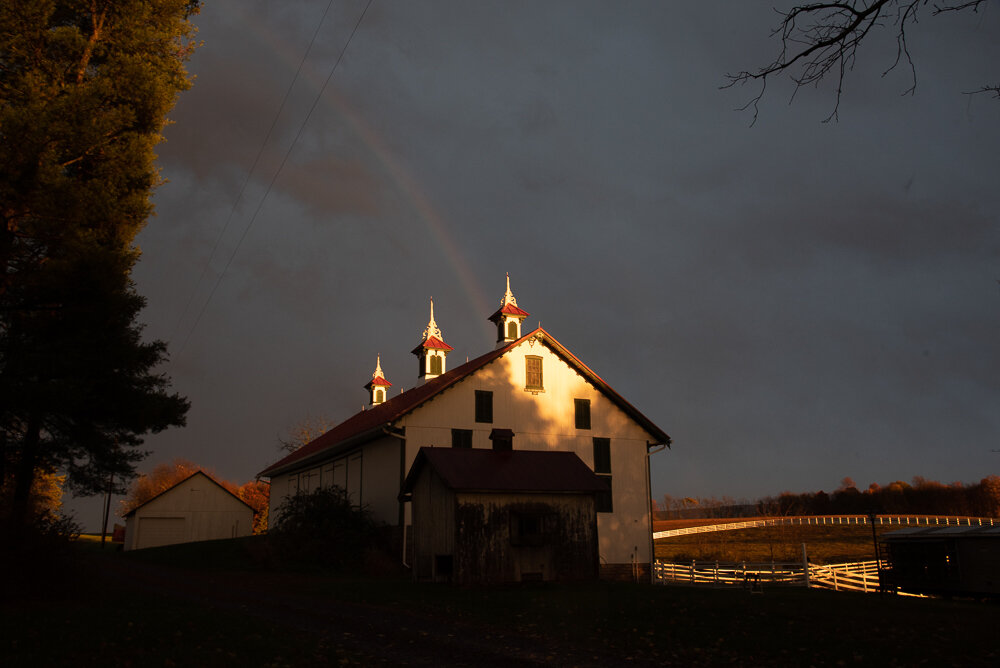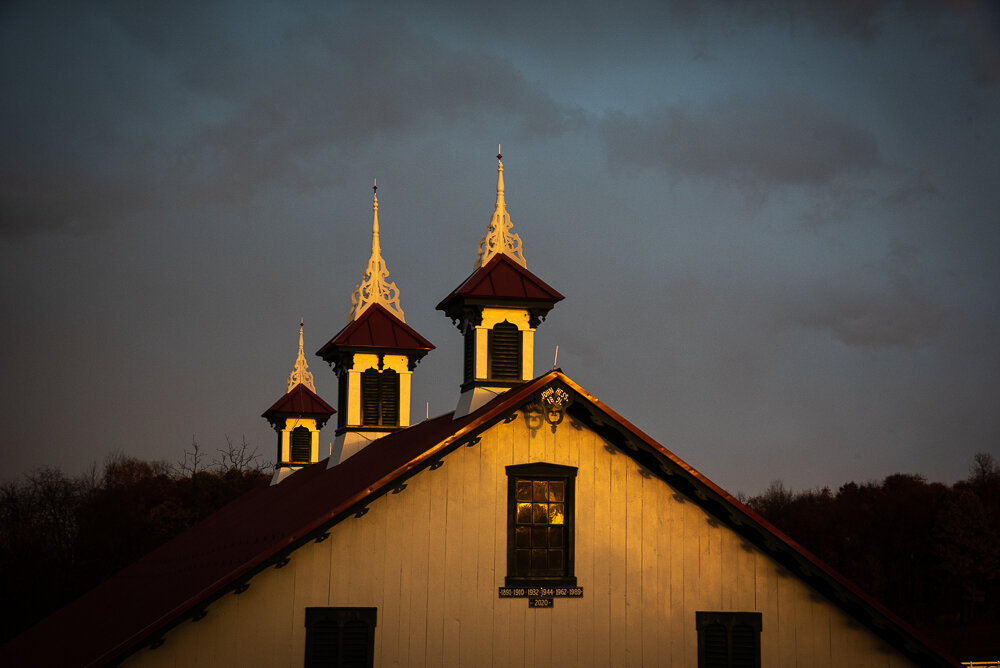Why I Spent 2020 On The Roof
Last March my dad and I decided to restore the cupolas on our 19th century Pennsylvania bank barn. I had about five weeks before my first art show of the year, Main Street Fort Worth, so I thought I could begin working on the biggest cupola, go off to Texas for my show, and then sandwich restoration time and art shows for the rest of the year.
We all know what happened just a few weeks after that: suddenly I had a whole lot of free time and a whole lot of cancelled art shows due to COVID-19.
Looking back now I’m glad I had the distraction, and the free time. Orders for photographs came in steadily from my website so I had some good chunks of time spent in the darkroom but without the usual frantic pace of art show travel. I very much miss seeing customers and fellow artists, and I miss being on the road and photographing, but it has been an interesting break.
Seven months later the cupolas were finally finished, thanks to many, many hours and the assistance of a master carpenter, Phil Keener, who rebuilt some of the most damaged sections and made the turnings. An Amish crew, who are also my neighbors, put up scaffolding and a platform for each cupola and installed the roofs for each. Painting of the barn itself was a whole separate project and one that isn’t yet finished. My dad’s wife Deb scraped and painted the north side. The west side was very damaged so I scraped and repaired many cracks and holes and loose boards, then Deb painted that side. The south and east sides are all damaged so scraping and repairs on those will have to wait until good weather.
On 19th century barns cupolas provided essential ventilation and the decorative elements were just a bonus. There are very few intact cupolas left on barns and after this experience I see why. It takes a lot of time, money, and skill to repair them. In addition to completely replacing the worst elements we also used special restoration epoxy to repair some of the existing pieces. The barn also had a new roof put on in 2019, and new lightning protection this fall.
When the weather is nice again there will be a lot more scraping and painting but for now I can walk out and see a job well done.
The barn was built in 1891 by John Hess, a relative on my paternal grandmother’s side. In 1977 my father bought this farm in a Pennsylvania valley from his mother’s cousin. The farm was just half a mile from the farm where his mother was born and lived. I was 13 when we moved from New Hampshire and we spent several years cleaning up the farm, repairing the old buildings, and painting the bank barn. It is very gratifying to think of the barn continuing to grace the valley for the future.
Here are some photos of the project:








